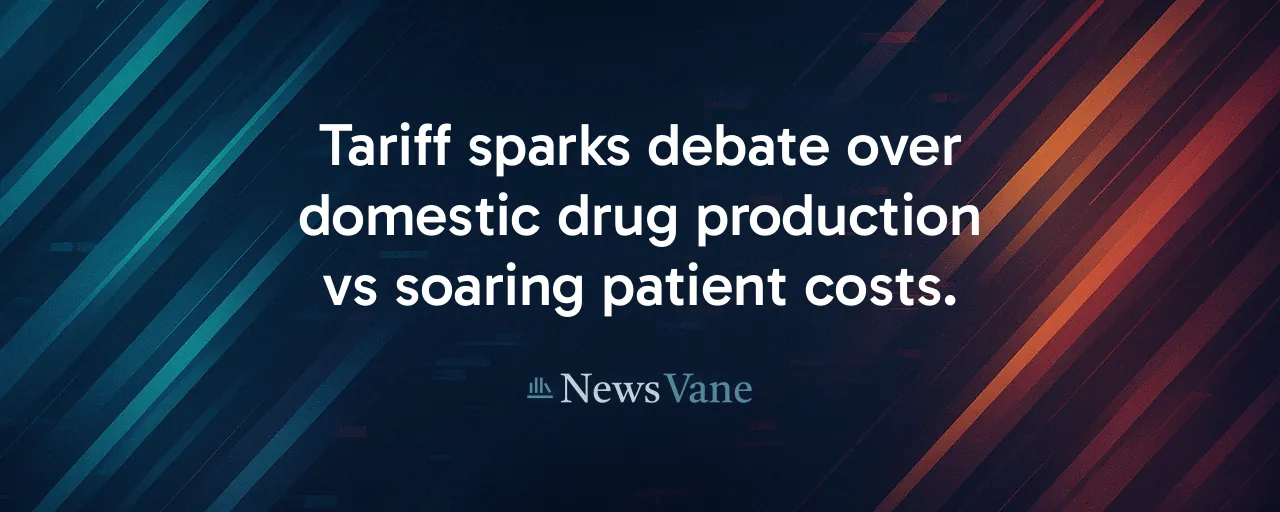A Bold Tariff Sparks Debate
President Donald Trump's recent announcement of a potential 200 percent tariff on imported pharmaceuticals, revealed during a televised Cabinet meeting on July 8, 2025, has sent shockwaves through the healthcare and trade sectors. The proposal, set to take effect after an 18-month transition, aims to reduce U.S. reliance on foreign drug production. The plan raises urgent questions about its impact on patients, manufacturers, and global trade. What does this mean for the medicines Americans depend on daily?
The tariff targets a wide range of products, from finished drugs to active pharmaceutical ingredients (APIs), with the goal of bringing manufacturing back to U.S. soil. Trump argues it will strengthen national security and create jobs, citing vulnerabilities exposed during recent shortages. Industry leaders and patient advocates, however, warn of steep price hikes and disruptions. The stakes are high, and the outcome hinges on how this policy balances competing priorities.
Why the Push for Domestic Drugs?
The U.S. imports roughly $203 billion in pharmaceuticals annually, with countries like Ireland, Germany, and Switzerland supplying 73 percent of finished drugs. APIs, the critical building blocks of medicines, often come from China and India. During the COVID-19 pandemic and 2023 antibiotic shortages, this dependence left hospitals scrambling. These events fueled arguments for bringing production home to safeguard supply chains.
Proponents of the tariff see it as a wake-up call for manufacturers. Companies like Eli Lilly and Merck have already announced new U.S. plants, spurred by earlier trade policies. The logic is straightforward: higher import costs will push firms to invest domestically, creating jobs and reducing risks. Building new facilities takes three to five years, and this transition could strain an already fragile system.
The Price Patients Might Pay
Economic models paint a sobering picture. A 25 percent tariff could add $51 billion annually to U.S. drug spending, roughly $600 per household. At 200 percent, the impact could be far worse, with retail prices potentially rising 10 to 13 percent or more. For patients with chronic illnesses, who rely on generics making up 90 percent of prescriptions, these costs could mean tough choices between medicine and other essentials.
Shortages are another concern. Cancer drugs and antibiotics, already in short supply, could become harder to access if global supply chains falter. Rural hospitals and safety-net clinics, which operate on tight budgets, may struggle to absorb higher costs. Health outcome studies show that price spikes often lead to skipped doses, worsening conditions, and higher medical bills down the line.
Global Trade and Retaliation Risks
The tariff's ripple effects extend beyond U.S. borders. Major exporters like India, China, and European nations may respond with their own trade barriers, potentially disrupting global drug supplies. The World Trade Organization could also challenge the policy, as medicines have been exempt from tariffs since a 1994 agreement. Such tensions might strain diplomatic ties with allies already wary of U.S. trade moves.
Investors are watching closely. Currency fluctuations and supply chain shifts could hit pharmaceutical stocks, while higher costs might squeeze research budgets. For U.S. insurers and federal programs like Medicare, rising drug prices could balloon budgets, forcing tough decisions on coverage and premiums.
Lessons From Past Trade Moves
History offers clues about what to expect. The 2018 steel tariffs, enacted under similar national security logic, boosted some domestic production but raised costs for industries like auto manufacturing. Pharmaceuticals, however, are different. Unlike steel, drugs involve complex global supply chains, with APIs crossing borders multiple times before reaching pharmacies. Past tariffs on medical devices showed limited reshoring but clear price increases for consumers.
The COVID-19 crisis and recent shortages underscored the need for reliable supplies, but they also showed the limits of broad trade restrictions. Developing countries that imposed medicine tariffs often faced higher costs without significant gains in local production. These examples suggest a one-size-fits-all tariff may fall short of its goals.
A Smarter Way to Secure Supplies?
Experts argue for a more targeted approach. Instead of blanket tariffs, policymakers could create a list of critical drugs, like antibiotics or cancer treatments, and apply lower, time-limited duties. Pairing these with tax credits for U.S. production could encourage investment without punishing patients. Public-private partnerships, already tested in small-scale API hubs, might expand domestic capacity faster than tariffs alone.
International coordination offers another path. An alliance of nations could diversify supply chains, reducing reliance on any single country without massive price hikes. Exemptions for generics, which have slim margins, could prevent market exits that might hand monopolies to brand-name firms. These ideas aim to balance security with affordability, avoiding the blunt force of a 200 percent tariff.
Weighing the Trade-Offs
Trump's tariff plan reflects a broader push to rethink global trade and national resilience. Its appeal lies in the promise of jobs and security, but the risks are hard to ignore: higher prices, shortages, and global friction. Patients, healthcare providers, and manufacturers all face uncertainty as the policy takes shape. The challenge is finding a way to strengthen domestic production without leaving vulnerable populations behind.
Targeted incentives and international cooperation could bridge the gap, offering a path to secure supplies while keeping costs in check. Policymakers have a narrow window to refine the approach before the 18-month transition ends. The decisions made now will shape access to medicines for years to come.
As the debate unfolds, one thing is clear: the health of millions hangs in the balance. Solutions need to prioritize both resilience and affordability, ensuring that efforts to protect the nation's drug supply do not come at the expense of those who need it most.
